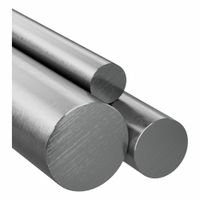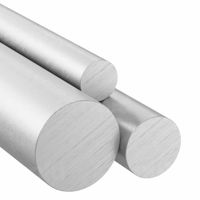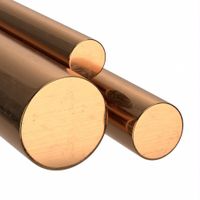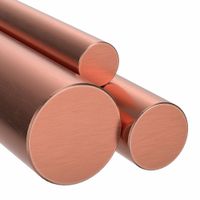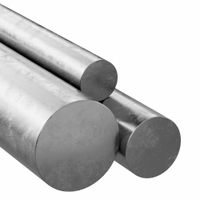Call +(254) 703 030 000 / 751 483 999 / 721 704 777
- Home
- Raw Materials
- Metals
.....Read More
Frequently Asked Questions
What are the most common uses of metals?
Metals are integral to various industries and everyday life due to their diverse properties such as conductivity, malleability, and strength. The most common uses of metals include:
1. **Construction**: Metals like steel and aluminum are extensively used in construction for building frameworks, bridges, and infrastructure due to their strength and durability.
2. **Transportation**: Metals are crucial in manufacturing vehicles, aircraft, ships, and trains. Steel and aluminum are commonly used for their strength-to-weight ratio, while titanium is used in aerospace for its lightweight and corrosion resistance.
3. **Electrical and Electronics**: Copper is widely used in electrical wiring and components due to its excellent conductivity. Gold and silver are used in high-end electronics for connectors and circuit boards.
4. **Machinery and Tools**: Metals such as iron, steel, and tungsten are used to manufacture machinery, industrial equipment, and tools due to their hardness and ability to withstand wear and tear.
5. **Packaging**: Aluminum and tin are used in packaging, particularly for food and beverages, due to their non-reactive nature and ability to preserve contents.
6. **Jewelry and Ornaments**: Precious metals like gold, silver, and platinum are used in jewelry for their luster and rarity.
7. **Medical Applications**: Metals such as stainless steel, titanium, and cobalt-chromium alloys are used in medical devices, implants, and surgical instruments due to their biocompatibility and strength.
8. **Energy Production**: Metals are used in the production and storage of energy. Uranium is used in nuclear power, while metals like lithium and cobalt are essential in battery technology.
9. **Household Items**: Everyday items such as cutlery, cookware, and appliances often contain metals like stainless steel and aluminum for their durability and ease of cleaning.
How are metals extracted from the earth?
Metals are extracted from the earth through a series of processes that involve mining, concentration, reduction, and refining.
1. **Mining**: The first step is to locate and extract the ore, which is a naturally occurring solid material from which a metal or valuable mineral can be profitably extracted. Mining methods include surface mining (open-pit or strip mining) and underground mining, depending on the depth and location of the ore.
2. **Concentration**: Once the ore is mined, it is concentrated to increase the metal content. This involves crushing and grinding the ore to a fine powder, followed by separation techniques such as flotation, magnetic separation, or gravity separation to remove impurities and concentrate the metal.
3. **Reduction**: The concentrated ore is then subjected to reduction processes to extract the metal. This can be done through:
- **Pyrometallurgy**: Involves heating the ore in a furnace to high temperatures, often with a reducing agent like carbon, to extract the metal. Examples include the smelting of iron ore in a blast furnace.
- **Hydrometallurgy**: Involves using aqueous chemistry to extract metals from ores. This includes leaching, where the ore is dissolved in a solvent, and the metal is recovered from the solution.
- **Electrometallurgy**: Involves using electrical energy to reduce metal ions to the metal. Electrolysis is a common method used for metals like aluminum.
4. **Refining**: The extracted metal is often impure and requires refining to achieve the desired purity. Techniques include electrorefining, zone refining, and chemical methods to remove impurities and produce high-purity metal.
These processes vary depending on the metal being extracted and the nature of the ore. Environmental considerations and technological advancements continue to influence the methods used in metal extraction.
What are the properties of aluminum?
Aluminum is a lightweight, silvery-white metal known for its versatility and wide range of applications. It has a low density of about 2.7 g/cm³, making it one of the lightest metals available. This property contributes to its extensive use in industries like aerospace and transportation, where weight reduction is crucial.
Aluminum exhibits excellent corrosion resistance due to the formation of a thin oxide layer on its surface when exposed to air. This protective layer prevents further oxidation, making aluminum ideal for outdoor applications and in environments where it might be exposed to moisture.
The metal is highly malleable and ductile, allowing it to be easily formed into various shapes and products through processes like rolling, extrusion, and forging. Its ductility also enables it to be drawn into wires.
Aluminum has good thermal and electrical conductivity, though it is not as conductive as copper. Its thermal conductivity makes it suitable for heat exchangers and cooking utensils, while its electrical conductivity is utilized in power transmission lines.
The metal is non-magnetic and non-sparking, which is beneficial in applications where these properties are required, such as in electronics and in environments with flammable materials.
Aluminum is also recyclable, retaining its properties after recycling, which makes it an environmentally friendly material. Its recyclability contributes to energy savings and reduced environmental impact.
In terms of mechanical properties, aluminum alloys can be engineered to enhance strength, hardness, and other characteristics, making them suitable for a wide range of structural applications. However, pure aluminum is relatively soft and has lower tensile strength compared to its alloys.
Overall, aluminum's combination of light weight, corrosion resistance, formability, and conductivity makes it a valuable material across numerous industries.
How does stainless steel resist corrosion?
Stainless steel resists corrosion primarily due to the presence of chromium, which constitutes at least 10.5% of its composition. When exposed to oxygen, chromium forms a thin, stable layer of chromium oxide on the surface of the steel. This passive film acts as a protective barrier, preventing further oxidation and corrosion of the underlying metal. Unlike iron oxide, which flakes off and exposes fresh metal to corrosion, chromium oxide adheres tightly to the surface, effectively sealing it from environmental factors.
The self-healing nature of this passive layer is crucial. If the surface is scratched or damaged, the exposed chromium reacts with oxygen to quickly reform the protective oxide layer, maintaining the steel's resistance to corrosion. This process is known as passivation.
Other alloying elements, such as nickel, molybdenum, and nitrogen, can enhance the corrosion resistance of stainless steel. Nickel stabilizes the austenitic structure, improving toughness and resistance to acidic environments. Molybdenum increases resistance to pitting and crevice corrosion, particularly in chloride-rich environments like seawater. Nitrogen enhances mechanical strength and further improves resistance to pitting.
The specific type of stainless steel and its resistance to corrosion depend on its composition and the environment in which it is used. For instance, austenitic stainless steels, such as the 300 series, are highly resistant to corrosion and are commonly used in food processing and medical equipment. Ferritic and martensitic stainless steels, with lower chromium content, offer moderate resistance and are used in applications like automotive exhausts and cutlery.
Overall, the combination of chromium and other alloying elements, along with the self-repairing passive film, enables stainless steel to maintain its integrity and appearance in a wide range of corrosive environments.
What is the difference between carbon steel and alloy steel?
Carbon steel primarily consists of iron and carbon, with carbon content up to 2.1% by weight. It may also contain small amounts of other elements like manganese, silicon, and copper. The properties of carbon steel are largely determined by its carbon content, which affects its hardness, ductility, and tensile strength. Higher carbon content increases hardness and strength but reduces ductility, making the steel more brittle.
Alloy steel, on the other hand, is made by adding various alloying elements to the base iron-carbon mixture. These elements can include chromium, nickel, molybdenum, vanadium, and others, each contributing specific properties to the steel. The addition of these elements enhances characteristics such as strength, hardness, corrosion resistance, and toughness. Alloy steels are often categorized into low-alloy and high-alloy steels, depending on the total percentage of alloying elements.
The key differences between carbon steel and alloy steel lie in their composition and properties. Carbon steel is simpler in composition and is generally less expensive, making it suitable for applications where cost is a significant factor and where enhanced properties are not required. It is commonly used in construction, automotive, and manufacturing industries.
Alloy steel, with its enhanced properties, is used in more demanding applications such as in the aerospace, automotive, and tool-making industries. The specific alloying elements and their concentrations are chosen based on the desired properties for the intended application, such as improved wear resistance, toughness, or ability to withstand high temperatures.
In summary, while carbon steel is defined by its carbon content, alloy steel is characterized by the presence of additional alloying elements that impart specific properties, making it suitable for specialized applications.
What are the applications of tool steel?
Tool steel is a type of carbon and alloy steel that is well-suited for making tools due to its hardness, resistance to abrasion, and ability to hold a cutting edge. Its applications are diverse and critical in various industries:
1. **Cutting Tools**: Tool steel is used to manufacture cutting tools like drills, taps, dies, and milling cutters. Its hardness and wear resistance make it ideal for cutting and shaping other materials.
2. **Molds and Dies**: In the plastic and metal forming industries, tool steel is used to create molds and dies for injection molding, die-casting, and stamping. Its ability to withstand high temperatures and pressures is crucial for these applications.
3. **Shear Blades**: Tool steel is used in the production of shear blades for cutting and trimming materials in industries such as metalworking and paper production.
4. **Punches and Stamping Tools**: It is used to make punches and stamping tools that require high strength and durability to withstand repetitive impact and pressure.
5. **Extrusion Tools**: Tool steel is employed in the production of extrusion dies and tools, which are used to shape materials by forcing them through a die.
6. **Wear-Resistant Applications**: Due to its hardness, tool steel is used in applications where wear resistance is critical, such as in the production of bearings and wear plates.
7. **Knives and Blades**: Tool steel is commonly used in the manufacture of industrial knives and blades for cutting and processing materials like wood, paper, and textiles.
8. **Automotive and Aerospace Components**: In these industries, tool steel is used for components that require high strength and precision, such as gears and engine parts.
9. **Construction Tools**: Tool steel is used to make construction tools like hammers, chisels, and screwdrivers, which require durability and toughness.
These applications leverage the unique properties of tool steel, including its hardness, toughness, and resistance to deformation and wear.
How is brass different from bronze?
Brass and bronze are both copper alloys, but they differ primarily in their composition and properties. Brass is an alloy of copper and zinc, while bronze is an alloy of copper and tin. The proportions of these metals can vary, leading to different types of brass and bronze with distinct characteristics.
Brass typically has a bright, gold-like appearance and is known for its malleability and acoustic properties, making it ideal for musical instruments, decorative items, and plumbing fixtures. The addition of zinc to copper in brass enhances its strength and ductility, allowing it to be easily shaped and formed.
Bronze, on the other hand, has a darker, reddish-brown color and is renowned for its hardness and resistance to corrosion, especially from saltwater. This makes it suitable for applications such as ship fittings, bearings, and sculptures. The tin in bronze not only increases its hardness but also improves its wear resistance and ability to withstand friction.
In terms of historical significance, bronze has been used since ancient times, notably during the Bronze Age, for tools, weapons, and art. Brass became more prominent later, particularly during the Roman era, for coins and decorative purposes.
Both alloys can include additional elements to enhance specific properties. For example, lead is sometimes added to brass to improve machinability, while phosphorus can be added to bronze to increase its strength and wear resistance.
In summary, the primary difference between brass and bronze lies in their composition—brass is copper and zinc, while bronze is copper and tin—resulting in distinct physical and mechanical properties that suit different applications.
What are the benefits of using copper in industrial applications?
Copper offers numerous benefits in industrial applications due to its unique properties. It is an excellent conductor of electricity and heat, making it ideal for electrical wiring, motors, and heat exchangers. Its high thermal conductivity ensures efficient heat dissipation, crucial in electronics and power generation.
Copper's corrosion resistance enhances its durability in harsh environments, reducing maintenance costs and extending the lifespan of equipment. This property is particularly valuable in plumbing, roofing, and marine applications. Additionally, copper's antimicrobial properties make it suitable for use in healthcare settings and food processing industries, where hygiene is paramount.
The metal's ductility and malleability allow it to be easily shaped into wires, sheets, and tubes, facilitating its use in various manufacturing processes. Copper alloys, such as brass and bronze, offer enhanced mechanical properties, including increased strength and wear resistance, broadening its application range.
Copper is also recyclable without loss of properties, supporting sustainable practices and reducing environmental impact. Its recyclability contributes to resource conservation and energy savings, as recycling copper requires significantly less energy than primary production.
In summary, copper's electrical and thermal conductivity, corrosion resistance, antimicrobial properties, ductility, and recyclability make it a versatile and valuable material in industrial applications, contributing to efficiency, sustainability, and cost-effectiveness.
Why is titanium considered a strong metal?
Titanium is considered a strong metal due to its unique combination of properties. It has a high strength-to-weight ratio, meaning it is as strong as steel but significantly lighter. This makes it ideal for applications where weight is a critical factor, such as in aerospace and automotive industries. Titanium's strength is derived from its crystal structure, specifically its hexagonal close-packed (HCP) lattice, which provides excellent resistance to deformation.
Additionally, titanium exhibits excellent corrosion resistance. It forms a stable oxide layer on its surface when exposed to oxygen, which protects it from further corrosion. This makes it suitable for use in harsh environments, including marine and chemical industries.
Titanium also maintains its strength at high temperatures, unlike many other metals that weaken when heated. This property is crucial for applications involving high thermal conditions, such as jet engines and power plants.
Moreover, titanium is biocompatible, meaning it is not harmful to living tissue, which is why it is widely used in medical implants and devices. Its non-toxic nature and ability to bond with bone make it ideal for surgical applications.
In summary, titanium's strength is attributed to its high strength-to-weight ratio, excellent corrosion resistance, ability to withstand high temperatures, and biocompatibility. These properties make it a versatile and valuable material across various industries.
What are the characteristics of cast iron?
Cast iron is an iron-carbon alloy with a carbon content typically above 2%. It is known for its excellent castability, machinability, and wear resistance. Here are its key characteristics:
1. **Composition**: Cast iron primarily consists of iron, carbon (2-4%), and silicon (1-3%). Other elements like manganese, sulfur, and phosphorus may be present in smaller amounts.
2. **Microstructure**: The microstructure of cast iron can vary, but it generally includes graphite flakes or nodules, which influence its mechanical properties. The presence of graphite gives cast iron its characteristic brittleness and compressive strength.
3. **Types**: There are several types of cast iron, including gray iron, ductile iron, white iron, malleable iron, and compacted graphite iron, each with distinct properties and applications.
4. **Brittleness**: Cast iron is generally brittle, especially gray and white iron, due to the presence of graphite flakes, which act as stress concentrators.
5. **Compressive Strength**: It has high compressive strength, making it suitable for applications like engine blocks and machine bases.
6. **Wear Resistance**: Cast iron exhibits excellent wear resistance, which is beneficial for components like brake rotors and pipes.
7. **Machinability**: It is relatively easy to machine, especially gray iron, due to the presence of graphite, which acts as a lubricant.
8. **Thermal Conductivity**: Cast iron has good thermal conductivity, making it ideal for cookware and heat exchangers.
9. **Corrosion Resistance**: While not as corrosion-resistant as some other metals, cast iron can withstand certain environments, especially when coated or alloyed.
10. **Cost-Effectiveness**: It is relatively inexpensive to produce, contributing to its widespread use in various industries.
These characteristics make cast iron a versatile material used in automotive, construction, and manufacturing industries.
